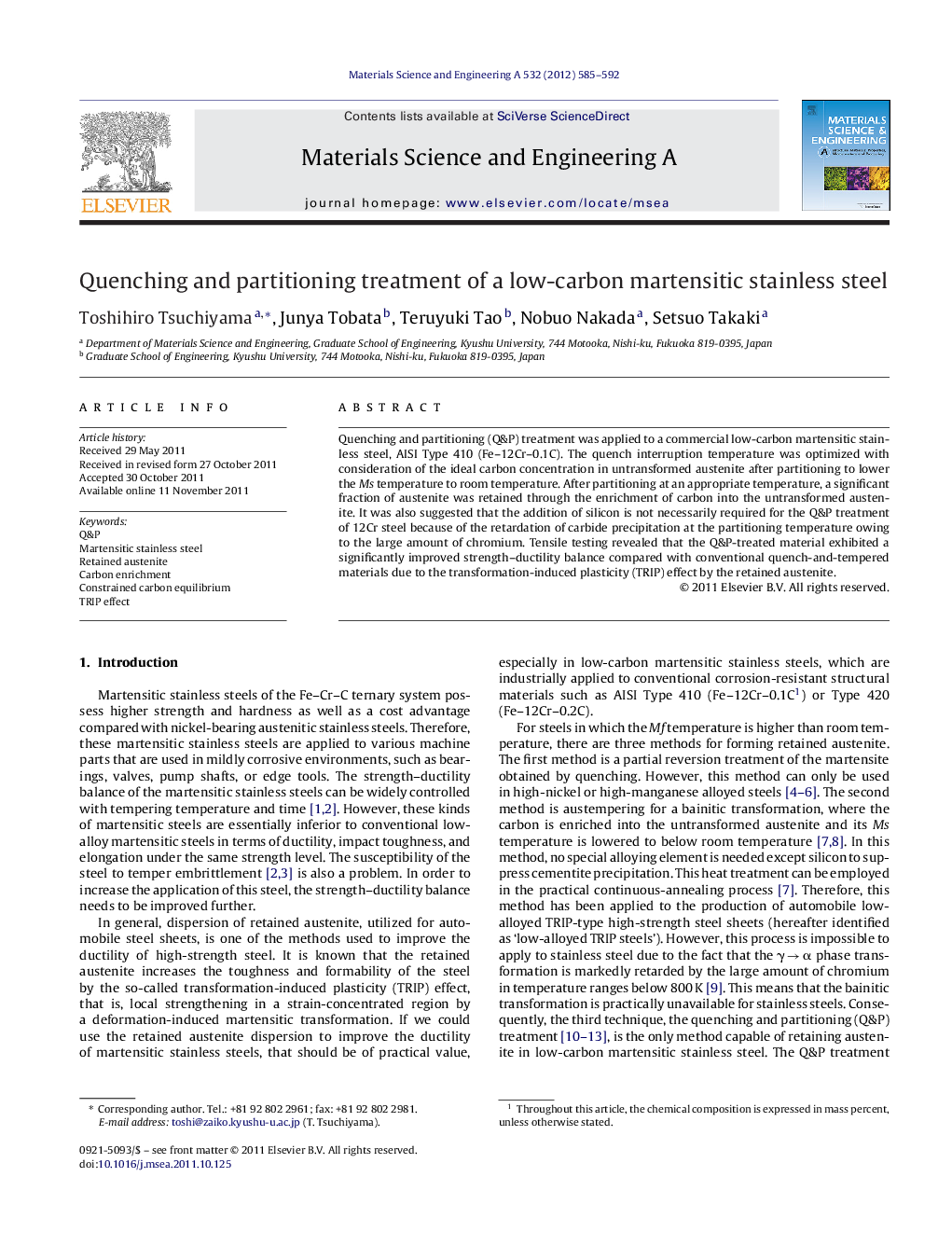| Article ID | Journal | Published Year | Pages | File Type |
|---|---|---|---|---|
| 1577909 | Materials Science and Engineering: A | 2012 | 8 Pages |
Quenching and partitioning (Q&P) treatment was applied to a commercial low-carbon martensitic stainless steel, AISI Type 410 (Fe–12Cr–0.1C). The quench interruption temperature was optimized with consideration of the ideal carbon concentration in untransformed austenite after partitioning to lower the Ms temperature to room temperature. After partitioning at an appropriate temperature, a significant fraction of austenite was retained through the enrichment of carbon into the untransformed austenite. It was also suggested that the addition of silicon is not necessarily required for the Q&P treatment of 12Cr steel because of the retardation of carbide precipitation at the partitioning temperature owing to the large amount of chromium. Tensile testing revealed that the Q&P-treated material exhibited a significantly improved strength–ductility balance compared with conventional quench-and-tempered materials due to the transformation-induced plasticity (TRIP) effect by the retained austenite.
► The amount of retained austenite was increased by Q&P treatment in 12Cr–0.1C steel. ► Ideal carbon concentrations in austenite and ferrite were calculated assuming CCE condition. ► The optimum partitioning treatment condition for 12Cr–0.1C steel was found. ► The strength–ductility balance of 12Cr–0.1C steel was improved by TRIP effect.
